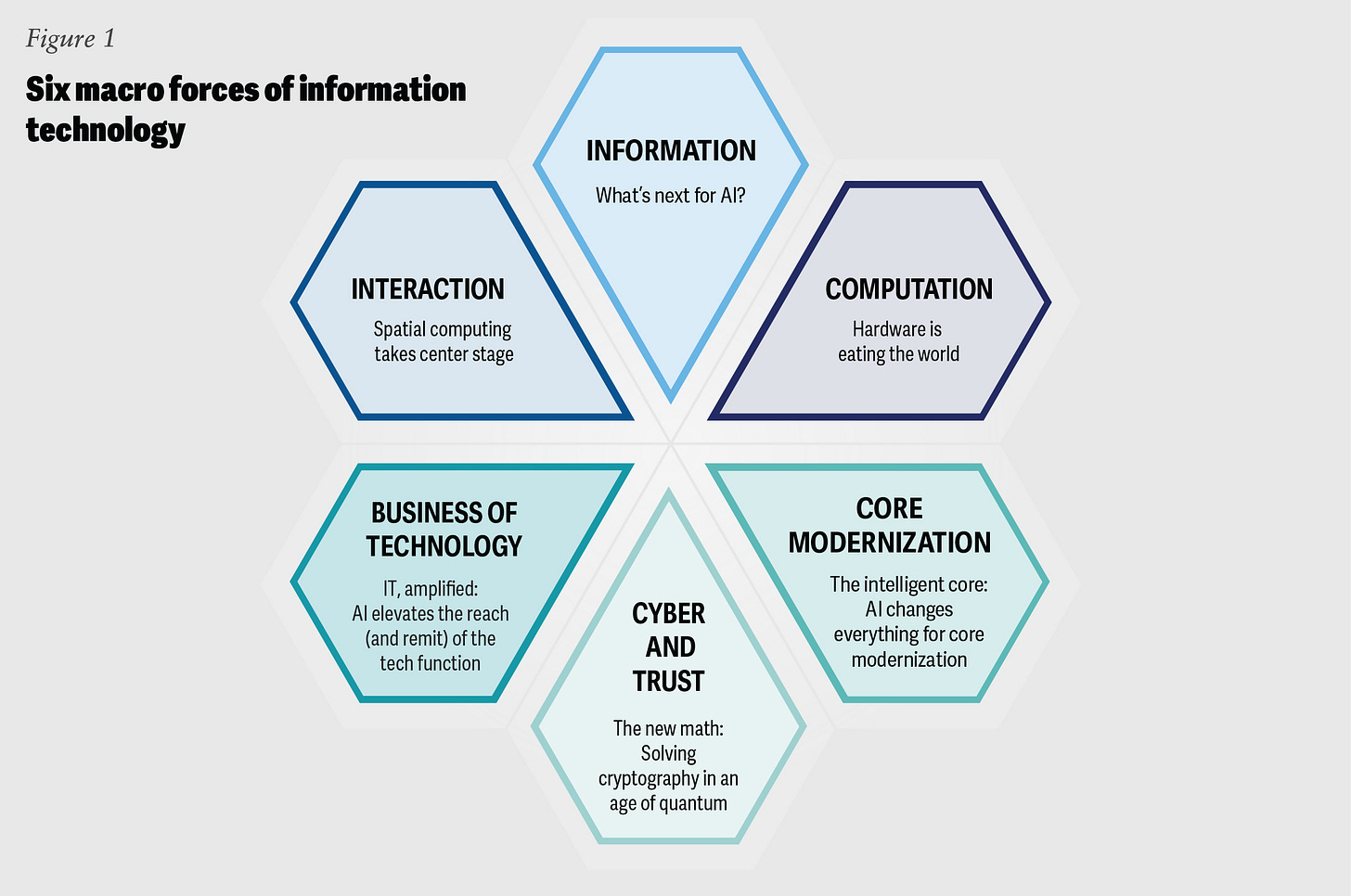AI undercover: Announcing Tech Trends 2025
Our latest Tech Trends report is now live, featuring AI weaving through nearly every trend as nimbly as light or electricity
Two years after Generative Artificial Intelligence staked its claim as the free space on everyone’s buzzword-bingo cards, you’d be forgiven for imagining that the future of technology is simply … more AI. That’s only part of the story, though. We propose that the future of technology isn’t so much about more AI as it is about ubiquitous AI. We expect that, going forward, AI will become so fundamentally woven into the fabric of our lives that it’s everywhere, and so foundational that we could stop noticing it.
Take electricity, for example. When was the last time you actually thought about electrons? We no longer marvel that the lights turn on—we simply expect them to work. The same goes for HTTP, the unseen thread that holds the internet together. We use it every day, but I’d bet most of us haven't thought about (let alone uttered) the word “hypertext” in quite some time.
AI will eventually follow a similar path, becoming so ubiquitous that it will be a part of the unseen substructure of everything we do, and we eventually won’t even know it’s there. It will quietly hum along in the background, optimizing traffic in our cities, personalizing our health care, and creating adaptative and accessible learning paths in education. We won’t “use” AI. We’ll just experience a world where things work smarter, faster, and more intuitively—like magic, but grounded in algorithms. We expect that it will provide a foundation for business and personal growth while also adapting and sustaining itself over time.
Nowhere is this AI-infused future more evident than in this year’s Tech Trends 2025 report, which each year explores emerging trends across the six macro forces of information technology (see figure below).
Half of the trends that we’ve chronicled are elevating forces—interaction, information, and computation—that underpin innovation and growth. The other half—the grounding forces of the business of technology, cyber and trust, and core modernization—help enterprises seamlessly operate while they grow.
As our team put the finishing touches on this year’s report, we realized that this sublimation and diffusion of AI is already afoot. Not the “only trend” nor “every trend,” AI is the scaffolding and common thread buttressing nearly every trend. (For those keeping a close eye, The new math: Solving cryptography in an age of quantum—about the cybersecurity implications of another game-changing technology, quantum computing—is the only one in which AI does not have a foundational role. Yet behind the scenes, AI advancements are accelerating advances in quantum.)
Here are the trends for 2025, unveiled today:
Spatial computing takes center stage: Future AI advancements will enhance spatial-computing simulations, eventually leading to seamless spatial-computing experiences integrated with AI agents.
What’s next for AI?: As AI evolves, the enterprise focus on large language models is giving way to small language models, multimodal models, AI-based simulations, and agents that can execute discrete tasks.
Hardware is eating the world: After years of software dominance, hardware is reclaiming the spotlight, largely due to AI's impact on computing chips and its integration into end-user devices, the Internet of Things, and robotics.
IT, amplified: AI elevates the reach (and remit) of tech talent: AI’s applicability to writing code, testing software, and augmenting tech talent is transforming IT and sparking a shift away from virtualization and austere budgets.
The new math: Solving cryptography in an age of quantum: Quantum computers could have significant implications for cybersecurity because of their ability to break existing encryption methods and digital signatures. Inaction on post-quantum encryption is no longer an option.
The intelligent core: AI changes everything for core modernization: Core systems providers have invested heavily in AI, which may simplify the user experience and data sharing across applications, but will make these systems more complex at an architectural level.
Because we expect AI to become part of tomorrow's foundational core—like electricity, HTTP, and so many other technologies—it’s exciting to think about how AI might evolve in the next few years as it marches toward ubiquity, and how we as humans may benefit. We here at Tech Trends will be chronicling every step of the journey – follow along at our report homepage and dive in.
Until next time,
Office of the CTO Client and Marketing Lead
Executive Editor, Tech Trends








